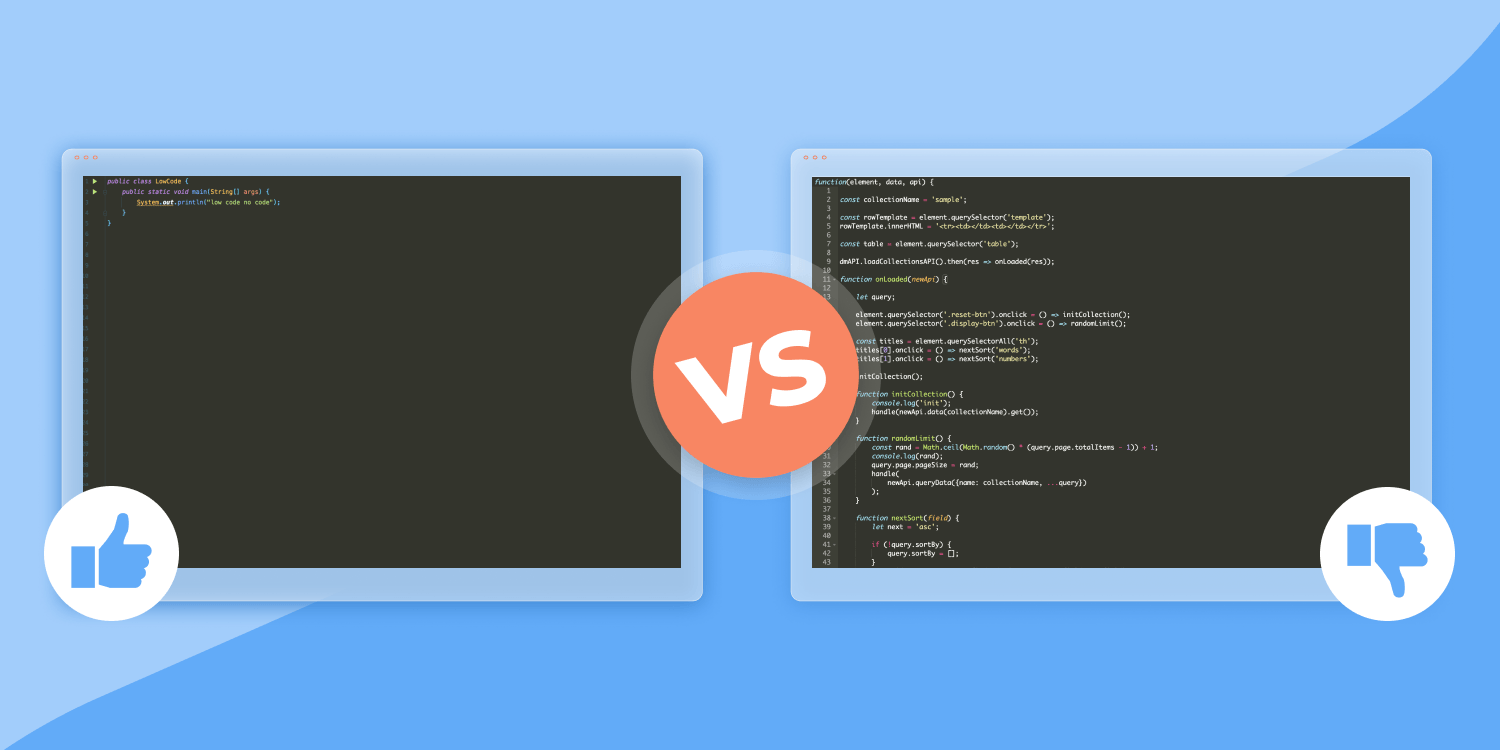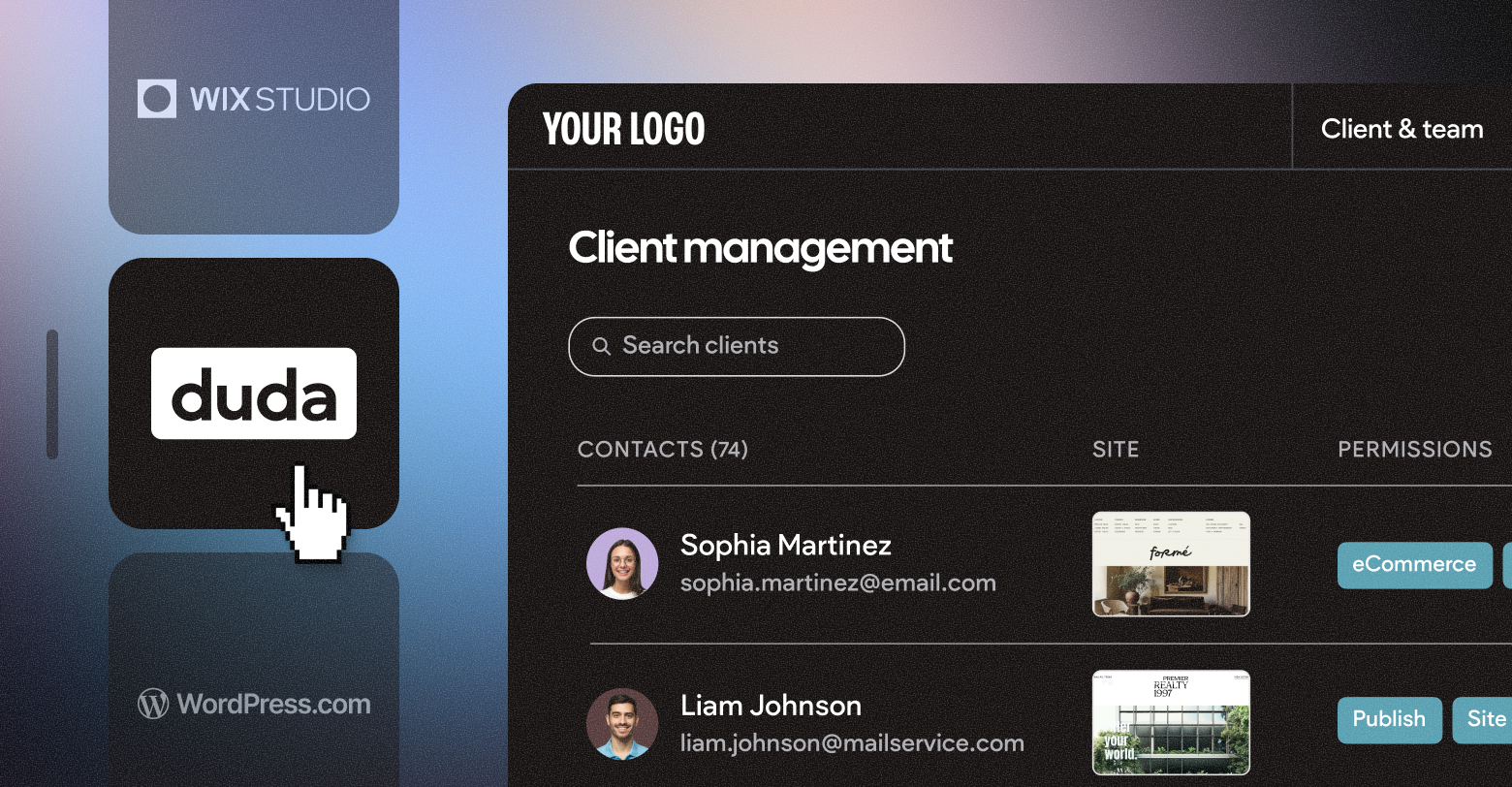There’s a revolution brewing in web design that makes it far simpler and faster to build beautiful, functional websites with little to no need for coding knowledge: it's the low-code no-code revolution.
It drives innovation across the Internet every day for professionals and website design agencies who depend on websites to run their businesses.
Read on to explore the low-code and no-code movement that’s shaping modern website building and
website building platforms.
What Are Low-Code and No-Code Platforms?
Low-code and no-code platforms enable people to build websites with little to no need for any coding knowledge. There are two main types of low-code and no-code platforms:
1) Design-First
These platforms use a visual approach to website design that automates and streamlines the design, scaling, and positioning of sites so that they look great and work well on any device. A graphical user interface featuring drag and drop functionality powers the design and makes it far more intuitive to build websites than having to write cohesive, functioning code.
2) Functionality-First
Functionality-first platforms concentrate on modernizing business workflows and automating IT processes. Using these platforms, business professionals can use integrations to streamline processes and connect different applications from project management tools to social networking platforms.
In terms of helping to build great looking websites from scratch as a
web design agency or an entrepreneur, design-first platforms are the way to go. You can think of functionality-first platforms as more suited to internal business needs rather than the customer-facing focus of design-first platforms.
Low-code and no-code platforms in web design represent a sub-plot in a wider movement that spans several other use cases in development, including the ability to quickly code bespoke apps for specific business purposes, optimize processes, or replace legacy apps. No-code development in particular affords employees with no coding knowledge the ability to automate various tasks in their daily work in order to become more efficient and productive.
The Problem with Depending on Coding Knowledge
Just
0.26-0.5 percent of the world’s population knows how to code, which means that most people who want to build websites using techniques based on programming knowledge can’t do it. It takes many arduous months of learning to become even remotely competent at one programming language let alone the three or four languages that website designers need if they want to build stylish modern websites.
Viewed through this lens, technology acts as a barrier to both innovation and creativity. The no-code and low-code movements attempt to lower that barrier by using technology to remove the need for technical programming skills when building websites. This paradigm shift democratizes the web building process in much the same way as platforms like Shopify democratize e-commerce.
The main differentiating feature between no-code and low-code platforms is their intended users:
- No-code platforms are best suited to people who lack any coding knowledge at all
- Low-code platforms are best for professionals with some degree of coding knowledge who want to speed up, streamline, and scale website building
Reusability is a central tenet of low-code and no-code platforms. Web design and development agencies can reuse pre-configured functionality and designs across multiple client sites, which saves time and enables them to scale their operations.
Low-Code and No-Code: A Brief Background
The concepts of low-code and no-code design trace their origins back to the rapid application development (RAD) approach that became popular during the 1990s. RAD modularizes software prototypes into smaller reusable components to help developers deliver high-quality software rapidly. RAD also reduced the size of the codebase for applications.
Low-code platforms began to emerge in the 2010s. While in some ways less complex than RAD, the model-driven design and visual programming aspects are clear influences from the RAD approach.
Toolkits and content management systems work together to design websites at scale in low-code and no-code web design platforms. Web professionals can build up libraries of templates, site sections, and widgets to reuse across future projects, which saves hundreds of hours of development time when building new sites.
Duda’s Low-Code and No-Code Features
Duda’s
website builder comes with several native low-code and no-code features that speed up website design, such as:
- Dynamic pages that help you generate thousands of pages on your site based on a single design.
- Internal collections that let you manage text, images, and other content, and use this content to generate multiple pages at scale by connecting your collections to dynamic pages.
- Ready to use dynamic pages that connect to a dataset, which helps easily generate listings pages, product catalogs, and more.
A large retailer from the Netherlands used Duda’s dynamic pages to effortlessly build a catalog website for its jewelry brand with 14,000 products. In another interesting use case exemplifying the power of Duda’s low-code capabilities, a large travel website created 19,000 pages with listings of tour & activity operators from around the globe.
Is the Future Codeless?
The traction gained by the low-code and no-code movements each year is such that
Gartner forecasted a 22.6 percent market growth over the course of 2021 for a total market value of $13.8 billion. Gartner’s definition lumps both of these development approaches together under the umbrella term low-code application platforms (LCAP). Gartner also estimates that by 2024, low-code application development will be responsible for more than 65% of application development activity.
To sum things up, low-code and no-code platforms use visual programming and logic to make building websites from scratch a far less complex undertaking than it once was. With the ability to deploy websites and refine them faster than ever, low-code and no-code design will likely replace standard web design for most projects.
Skilled web professionals still have much value to add in a web design world with minimal code, particularly for specialized design projects requiring high levels of customization. So, the future looks like it will include the best of both worlds.
By Stephen Alemar
•
October 23, 2025
Discover why Duda is a top-rated website builder on G2, recognized for usability, easy setup, strong relationships, and excellent results, all backed by real reviews.
By Ilana Brudo
•
October 16, 2025
Discover why digital marketing agencies are choosing Duda over Wix Studio and WordPress for speed, reliability, and client experience, and how it helps them scale without operational overhead.
By Stephen Alemar
•
October 14, 2025
Duda vs. Brizy: Compare these website builders for agencies focused on scaling, client management, AI, eCommerce, and team collaboration.
Show More
Related Posts











